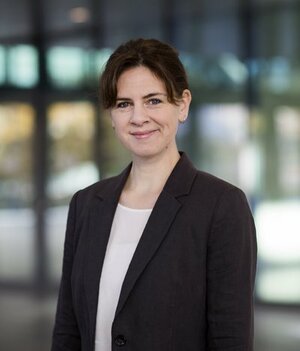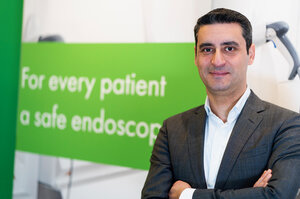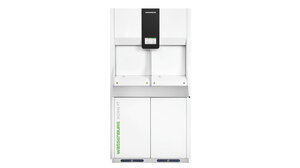How plasma technology could help purify air and water in a medical environment

The Disinfection WASPD (Disinfection. Water, Air, Spray. Purification and Dispensing) project has been a while in the making. Initial conversations with Wassenburg Medical, for example, about endoscope disinfection actually began some two years ago but it was only in January this year that PhDs got underway with their research.
Productive coincidence
How it all got started was a bit by coincidence, really. Mehmet Üzümcü, R&D Director of Wassenburg Medical, explains. “Companies don’t have the time, resources and people to dwell – we have to work in a very focused way, with short timelines, to get a customer innovation. Universities have the breadth and depth of knowledge as well as the freedom to go in different directions. So when one of our colleagues realized that the High Tech Systems Center was keen to get some projects going and that there was some capacity and expertise in house to develop new technologies, and this landed on my desk, I made contact to talk about the possibilities.”
This led to Mehmet getting in touch with Dr Ana Sobota, Associate Professor in the Elementary Processes in Gas Discharges group at Eindhoven University of Technology (TU/e). Her particular area of interest is the interaction of plasma with (complex) targets such as biological tissue, and its application in fields such as medicine and agriculture. “It quickly became clear that there were some promising areas where we could achieve great things by collaborating together in this project, and particularly in the area of plasma technology, Ana’s domain, in which significant knowledge had been gained in the purification of air and water in previous projects.
Since our company’s motto is ‘a safe endoscope for every patient’ this rang quite a lot of bells!” Mehmet adds.

Clinical Conditions
The quality of the water is a key factor in endoscope safety. You can disinfect the endoscope after a procedure but if the final rinsing phase introduces new microorganisms that attach to the endoscope due to the poor quality of the water, this leads to a new injection of micro-organisms. In its solutions to this problem Wassenburg Medical employs various filters to ensure that such contaminants do not reach the endoscope. The lifetime of such filters can vary significantly, depending on the water quality in a particular country. Where the water quality is poor, the filters need replacing more frequently, which makes it an expensive process.
With this in mind, Mehmet was keen to find out how plasma technology could help solve this problem of water and air purification. The latter is important because drying cabinets, which also contain filters, are used to store endoscopes when they are not in use. The so-called ‘medical air’ ensures that the endoscopes remain dry and therefore less susceptible (in fact, virtually zero) to the growth of bacteria. Again, there is a difference between Western countries and less affluent parts of the world in respect of the availability of medical air for these cabinets.
Knowledge valorization
Mehmet: “If we can use plasma technology to purify air and water, then this frees the customer from having to employ and replace all kinds of filters. If we can make it more efficient and less expensive, that will be a huge benefit. This is what we hope this project can bring us. Firstly, through knowledge – that’s the primary goal of research – and valorizing that knowledge – get a grip on the feasibility of applying this in a product that is both commercially attractive and is absolutely safe.”
That this project appeals to PDEng students is evident from the combination of technological knowledge, practical experience and latest design methods that Mehmet considers essential. “Part of this project is concerned with the design. Can we build a device that is compact enough to fit into and work in our machines.”

Clear picture of the need
PhD student Jovana Petković kicked off her research in January, first concentrating on the water since this is more difficult. She is very enthusiastic about working with a company like Wassenburg Medical because there is a very specific challenge that has to be tackled. “It helps to have a focus for the research. I’m not sure that we would have begun developing this technology if we hadn’t got this specific challenge. It also helped to have been talking to Mehmet for some time. It gave us a fairly clear picture of what is needed in terms of design, how things look like. Our students can come up with all kinds of pretty designs but useless in terms of functionality. So it’s not as if we’re coming at it from zero. We know what we’re designing for. The kind of plasma we are using in this case is atmospheric non-thermal plasma. The more familiar arc plasma used in welding or metal-cutting is not very suitable for this application. Atmospheric non-thermal plasma is colder, so the challenge is to make it efficient enough in water to kill the contaminants. The first plasma is expected any time now, so we’re pretty excited.”
Iterative process
The project is still very much in the start-up phase, and Mehmet’s involvement in the research is limited, although there are quarterly progress meetings to review the expectations and ambitions, and as time goes by he expects this to increase. “One of the things we are doing, though,” Mehmet explains, “is organizing product training for everyone involved in this project because it’s very important for them to get to know our existing solutions and take these into account in designing this new technology. It’s knowledge transfer, in the other direction. Knowledge exchange and collaboration are all part of the iterative process towards a successful outcome.”
Essential funding
Mehmet is also indebted to the co-financing by Holland High Tech through a public-private partnership in research and development within the Dutch top sector of High-Tech Systems and Materials. “Such funding is, of course, essential in any research initiative. After all, research is a high-risk venture and the costs simply cannot be covered by a company alone. We’re also very grateful to Jan-Jaap Koning who made sure that the proposal hit the right notes to secure that funding. In fact, the HTSC has functioned as a very valuable go-between in the creation of this collaboration, acting as a bridge between the various participants and interests, and helping get the right disciplines around the table. This value of this ‘influence’ cannot be understated.”
The WASPD project has two other industry partners. In the Dispensing part of the project, which has been successfully completed, AFA Dispensing (https://www.afadispensing.com) focused on the manufacturing of spray for disinfection while a third partner, Sensiks, is focusing on the disinfection of its multisensory experience pod (https://www.sensiks.com/).